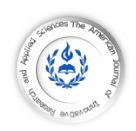
GENERAL INFORMATION

| ISSN: 2429-5396 (e) | www.american-jiras.com | |
| Web Site Form: v 0.1.05 | JF 22 Cours, Wellington le Clairval, Lillebonne | France |
| Web Site Form: v 0.1.05 | JF 22 Cours, Wellington le Clairval, Lillebonne | France |

| HOME | ABOUT US | ARCHIVE | AIMS AND SCOP | AUTHORS | REVIEW | SUMIBMIT MANUSCRIPT | EDITORIAL BOARED | PUBLICATION FEE |
| | ARTICLES | Am. J. innov. res. appl. sci. Volume 11, Issue 3, Pages 165-172 (September, 2020) |
| Research Article 5 |


|
American Journal of innovative
Research & Applied Sciences
Research & Applied Sciences
ISSN 2429-5396 (Online)
OCLC Number: 920041286
OCLC Number: 920041286
| HOME || ABOUT US || ARCHIVES || AIMS AND SCOP || AUTHORS || REVIEW|| SUBMIT MANUSCRIPT || EDITORIAL BOARD || CONTACT US |

| JUJY | VOLUME 11 | N° 3 | 2020 |

| Info-AJIRAS-® Journal ISSN 2429-5396 (Online) / Reference CIF/15/0289M |
American Journal of Innovative Research & Applied Sciences
Authors Contact
*Correspondant author and authors Copyright © 2020:
| Dimbimalala, Randrianasoloharisoa 1*| Heriniaina, Andrianaivontseheno 1 | and | Fils, Lahatra
Razafindramisa 1 |
Affiliation.
1. Université d’Antananarivo | Département de Physique | Laboratoire de Physique de la Matière et du Rayonnement | Antananarivo |
Madagascar |
This article is made freely available as part of this journal's Open Access: ID | Dimbimalala-Ref.1-ajira200820 |
RESUME
Introduction : Le platine est un métal qui trouve des nombreuses applications intéressantes comme en catalyse grâce à ses propriétés électroniques. Malheureusement, c’est une ressource assez rare car il se trouve dans la catégorie des métaux précieux et son utilisation revient chère. Objectif : L’objectif de ce travail est de déterminer si l’on peut utiliser un alliage platine-cuivre, au lieu du platine pur, sans altérer les propriétés du platine. Méthodes : Dans ce travail, nous avons utilisé la simulation numérique basée sur la Dynamique Moléculaire classique pour déterminer le comportement des atomes du système. Nous avons utilisé le potentiel EAM (Embedded Atom Method) pour modéliser les interactions entre ces atomes. Nous avons commencé par former un substrat constitué soit du Pt soit du Cu. Sur ce substrat est ensuite déposé des atomes de Pt pour former des couches. A la fin, nous avons étudié et comparé les structures des couches ainsi déposées. Ces structures sont caractérisées par les distances inter couches et les distances interatomiques. Résultats : Pour le système Pt/Pt, les distances interatomiques varient de 2.38Å pour la 1ère couche déposée sur le substrat à 2.34 Å pour la 4ème couche et pour les distances intercouches nous avons trouvé une valeur de 2.30Å pour la 1ère couche et 2.21Å pour la 4ème couche. En même temps, pour le système Pt/Cu, les distances interatomiques varient de 2.61Å à 2.38Å et les distances intercouches varient de 2.23Å à 2.17Å. On note aussi la coexistence des deux structures CFC (Cubique à Faces Centrées) et HC (Hexagonale Compacte) pour les deux systèmes. Conclusions : Dans cette étude, les résultats des deux systèmes Pt/Pt et Pt/Cu présentent quelques différences lors des premiers dépôts (1ère couche déposées sur le substrat) mais ces différences diminuent lorsqu’on s’éloigne du substrat. En effet les atomes déposés sur le substrat cherchent d'abord à accorder leurs paramètres de mailles avec les atomes du substrat. Lorsqu'on s'éloigne de ce substrat, les atomes déposés commencent à adopter leurs propres paramètres de maille.
Mots-clés: Couches minces, Platine, Cuivre, Dynamique moléculaire classique, potentiel EAM.
ABSTRACT
Introduction: Platinum is a metal which finds many interesting applications such as in catalysis thanks to its electronic properties. Unfortunately, this is a fairly scarce resource as it is found in the precious metals category and is expensive to use. Objective: The objective of this work is to determine whether we can use a platinum-copper alloy, instead of pure platinum, without altering the properties of platinum. Method: In this work, we used numerical simulation based on classical Molecular Dynamics to determine the behavior of atoms in the system. We used the EAM (Embedded Atom Method) potential to model the interactions between these atoms. We started by forming a substrate consisting of either Pt or Cu. Pt atoms are then deposited on this substrate to form layers. At the end, we studied and compared the structures of the layers thus deposited. These structures are characterized by inter-layer distances and interatomic distances. Results: For the Pt / Pt system, the interatomic distances vary from 2.38Å for the 1st layer deposited on the substrate to 2.34 Å for the 4th layer and for the interlayer distances we found a value of 2.30Å for the 1st layer and 2.21Å for the 4th layer. At the same time, for the Pt / Cu system, the interatomic distances vary from 2.61Å to 2.38Å and the inter-layer distances vary from 2.23Å to 2.17Å. We also note the coexistence of the two structures FCC (Face Centered Cubic) and HCP (Hexagonal Compact) for the two systems. Conclusion: In this study, the results of the two Pt / Pt and Pt / Cu systems show some differences during the first layers (1st layer deposited on the substrate) but these differences decrease when the layers are far from the substrate. In fact, the atoms deposited on the substrate first seek to match their lattice parameters with the atoms of the substrate. When the layers are far from this substrate, the deposited atoms begin to adopt their own lattice parameters.
Keywords: Thin films, Platinum, Copper, Classical molecular dynamics, EAM potential.
Introduction : Le platine est un métal qui trouve des nombreuses applications intéressantes comme en catalyse grâce à ses propriétés électroniques. Malheureusement, c’est une ressource assez rare car il se trouve dans la catégorie des métaux précieux et son utilisation revient chère. Objectif : L’objectif de ce travail est de déterminer si l’on peut utiliser un alliage platine-cuivre, au lieu du platine pur, sans altérer les propriétés du platine. Méthodes : Dans ce travail, nous avons utilisé la simulation numérique basée sur la Dynamique Moléculaire classique pour déterminer le comportement des atomes du système. Nous avons utilisé le potentiel EAM (Embedded Atom Method) pour modéliser les interactions entre ces atomes. Nous avons commencé par former un substrat constitué soit du Pt soit du Cu. Sur ce substrat est ensuite déposé des atomes de Pt pour former des couches. A la fin, nous avons étudié et comparé les structures des couches ainsi déposées. Ces structures sont caractérisées par les distances inter couches et les distances interatomiques. Résultats : Pour le système Pt/Pt, les distances interatomiques varient de 2.38Å pour la 1ère couche déposée sur le substrat à 2.34 Å pour la 4ème couche et pour les distances intercouches nous avons trouvé une valeur de 2.30Å pour la 1ère couche et 2.21Å pour la 4ème couche. En même temps, pour le système Pt/Cu, les distances interatomiques varient de 2.61Å à 2.38Å et les distances intercouches varient de 2.23Å à 2.17Å. On note aussi la coexistence des deux structures CFC (Cubique à Faces Centrées) et HC (Hexagonale Compacte) pour les deux systèmes. Conclusions : Dans cette étude, les résultats des deux systèmes Pt/Pt et Pt/Cu présentent quelques différences lors des premiers dépôts (1ère couche déposées sur le substrat) mais ces différences diminuent lorsqu’on s’éloigne du substrat. En effet les atomes déposés sur le substrat cherchent d'abord à accorder leurs paramètres de mailles avec les atomes du substrat. Lorsqu'on s'éloigne de ce substrat, les atomes déposés commencent à adopter leurs propres paramètres de maille.
Mots-clés: Couches minces, Platine, Cuivre, Dynamique moléculaire classique, potentiel EAM.
ABSTRACT
Introduction: Platinum is a metal which finds many interesting applications such as in catalysis thanks to its electronic properties. Unfortunately, this is a fairly scarce resource as it is found in the precious metals category and is expensive to use. Objective: The objective of this work is to determine whether we can use a platinum-copper alloy, instead of pure platinum, without altering the properties of platinum. Method: In this work, we used numerical simulation based on classical Molecular Dynamics to determine the behavior of atoms in the system. We used the EAM (Embedded Atom Method) potential to model the interactions between these atoms. We started by forming a substrate consisting of either Pt or Cu. Pt atoms are then deposited on this substrate to form layers. At the end, we studied and compared the structures of the layers thus deposited. These structures are characterized by inter-layer distances and interatomic distances. Results: For the Pt / Pt system, the interatomic distances vary from 2.38Å for the 1st layer deposited on the substrate to 2.34 Å for the 4th layer and for the interlayer distances we found a value of 2.30Å for the 1st layer and 2.21Å for the 4th layer. At the same time, for the Pt / Cu system, the interatomic distances vary from 2.61Å to 2.38Å and the inter-layer distances vary from 2.23Å to 2.17Å. We also note the coexistence of the two structures FCC (Face Centered Cubic) and HCP (Hexagonal Compact) for the two systems. Conclusion: In this study, the results of the two Pt / Pt and Pt / Cu systems show some differences during the first layers (1st layer deposited on the substrate) but these differences decrease when the layers are far from the substrate. In fact, the atoms deposited on the substrate first seek to match their lattice parameters with the atoms of the substrate. When the layers are far from this substrate, the deposited atoms begin to adopt their own lattice parameters.
Keywords: Thin films, Platinum, Copper, Classical molecular dynamics, EAM potential.
ETUDE PAR LA DYNAMIQUE MOLECULAIRE DE LA CROISSANCE DE COUCHES DE PLATINE
ETUDE PAR LA DYNAMIQUE MOLÉCULAIRE DE LA CROISSANCE DE COUCHES DE PLATINE
| Dimbimalala, Randrianasoloharisoa 1* | Heriniaina, Andrianaivontseheno 1 | and | Fils, Lahatra Razafindramisa 1 |. Am. J. innov. res. appl. sci. 2020; 11(3):xx-xx.
| PDF FULL TEXT | | XML FILE | | Received | August 10, 2020 | | Accepted | August 22, 2020 | | Published | September 01, 2020 |
ETUDE PAR LA DYNAMIQUE MOLÉCULAIRE DE LA CROISSANCE DE COUCHES DE PLATINE
| Dimbimalala, Randrianasoloharisoa 1* | Heriniaina, Andrianaivontseheno 1 | and | Fils, Lahatra Razafindramisa 1 |. Am. J. innov. res. appl. sci. 2020; 11(3):xx-xx.
| PDF FULL TEXT | | XML FILE | | Received | August 10, 2020 | | Accepted | August 22, 2020 | | Published | September 01, 2020 |
*Corresponding author Author & Copyright Author © 2020: | Dimbimalala, Randrianasoloharisoa |. All Rights Reserved. All articles published in American Journal of Innovative Research and Applied Sciences are the
property of Atlantic Center Research Sciences, and is protected by copyright laws CC-BY. See: http://creativecommons.org/licenses/by-nc/4.0/